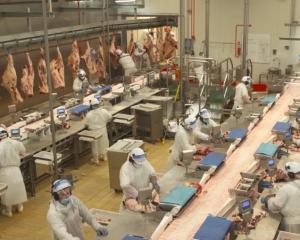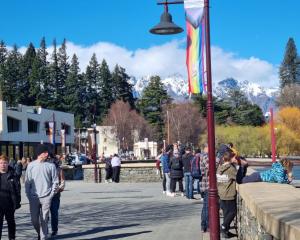The Port of Tauranga and Port Otago have dredging programmes under way and pressure is mounting for the country's ports to expand their ability to host deeper draught ships.
Westpac industry economist David Norman believes that rather than the number of weekly visits falling, with the use of much larger ships, he predicts the number will ''rise slightly''.
The average number of ship visits per week stands at 17, but Mr Norman said the future number would probably range between 12 and 28.
''The mid-range scenario suggests around 20 visits a week, up slightly from today,'' Mr Norman said.
Even as ship sizes increased, Mr Norman said the number of weekly ship visits would most likely rise because of growth in merchandise trade and containerisation.
''Concerns that vessel size growth will leave New Zealand reliant on just a handful of ship visits a week seem unjustified,'' he said.
At present the average size of ships visiting is 2700 TEU (20ft container equivalent), but by 2030 that will rise to an average 3500 TEU to 5500 TEU, he said.
However, Mr Norman said New Zealand could be seeing maximum size ships of 7700 TEU.
''Vessels carrying 7700 are about 330m long and have a draught of 14.5m,'' Mr Norman said.
Port Otago's dredging to 14m - to be completed by December next year - would allow for ships of 6000 to 8000 TEU to visit. The majority of visits now are from 4500 TEU ships but there have been visits of ships of more than 5000 TEU.
Port Otago chief executive Geoff Plunket said the port company had consents allowing the channel to be deepened to 15m.
''Once the full [dredging] development has been completed we could handle a 8000 TEU vessel,'' Mr Plunket said.
Mr Norman said ports would have to undertake dredging and possibly replace cranes, to work more swiftly.
''The cost of these upgrades and the efficiency gains of large vessels make it very likely that the number of New Zealand ports being directly served by international container vessels will fall over the next 12 to 20 years, probably to between four and six ports.
The ports of Auckland, Tauranga, Wellington, Lyttelton and Port Chalmers are all in that top tier.
''Some ports ... are engaging in tie-ups that will ensure an ongoing role for smaller ports as feeders, via coastal shipping, into the larger ports,'' Mr Norman said.
Using bigger ships meant savings of up to 50% for their operators. The bigger ships used less fuel per container and labour costs were static, as crew numbers were similar.
The number of weekly ship visits is still most likely to rise.
''This is good news for New Zealand exporters and importers, as competition will likely be stronger than some are concerned it may be, keeping prices lower,'' Mr Norman said.












